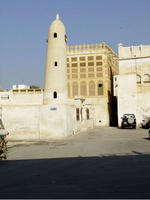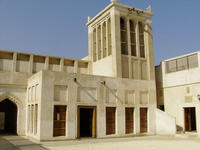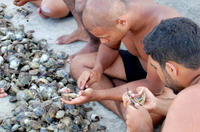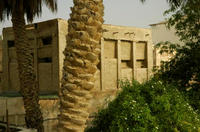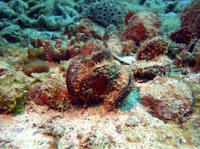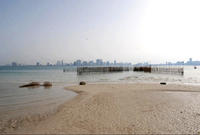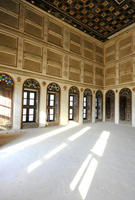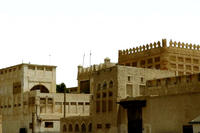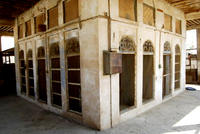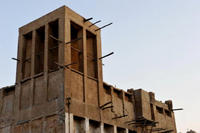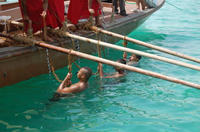You are in: Middle East -> Bahrain -> Pearling, Testimony ... , and traditional search or Image Gallery will yield results of this site only
Pearling, Testimony of an Island Economy
| Site number: | 1364 |
|
| Type of site: | Cultural | |
| Date: | 100 - 1930 | |
| Date of Inscription: | 2012 | |
| Location: | Middle East, Bahrain, Muharraq City | |
Up to 75 images are shown here. Click on each for more details or on Image Gallery for more images.
| Description: | The site consists of seventeen buildings in Muharraq City, three offshore oyster beds, part of the seashore and the Qal’at Bu Mahir fortress on the southern tip of Muharraq Island, from where boats used to set off for the oyster beds. The listed buildings include residences of wealthy merchants, shops, storehouses and a mosque. The site is the last remaining complete example of the cultural tradition of pearling and the wealth it generated at a time when the trade dominated the Gulf economy (2nd century to the 1930s, when Japan developed cultured pearls). It also constitutes an outstanding example of traditional utilization of the sea’s resources and human interaction with the environment, which shaped both the economy and the cultural identity of the island’s society. --WHMNet's description is from WHC Site, where additional information is available. | |
| The Bahrain pearling trail is a 3.5 km trail located in the island of Muharraq, in Bahrain, that was used by pearl divers during much of Bahrain's history until the early 1930s, when the pearl market in Bahrain crashed as a result of the introduction of cultured pearls from Japan. Pearling in Bahrain has occurred since 2000 BC. The pathway consists of 17 buildings in Murharraq, 3 oyster beds located in the nearby sea, a segment of the coast and the seafront Bu Mahir fortress in the southern tip of Muharraq.The trail was inscribed as a UNESCO World Heritage Site on June 30, 2012 and is Bahrain's second World Heritage Site after the Bahrain Fort. Pearl diving in Bahrain was first mentioned in Assyrian texts dating to 2000 BC, referring to "fish eyes" from Dilmun (the ancient name of Bahrain). Bahrain (as Tylos, Bahrain's Greek name) was mentioned by Pliny to have been ,"famous for the vast number of its pearls". The golden age of pearling is stated to have been between the 1850s to 1930, when pearls were more precious than diamonds and had attracted jewelers like Jacques Cartier to the country. There were around 30,000 pearl divers by the end of 1930, as pearling was the principal industry in Bahrain prior to the discovery of oil in 1932. After the collapse of the pearling industry, most divers switched to the newly founded oil sector. Currently, the trading of cultured pearls in Bahrain is prohibited. Few pearl divers remain today. --Wikipedia. Text is available under the Creative Commons Attribution-ShareAlike License. | ||
| Source: | http://whc.unesco.org/en/list/1364 | |
| Reference: | 1. UNESCO World Heritage Center (http://whc.unesco.org/en/list/1364). 2. Wikipedia. | |


